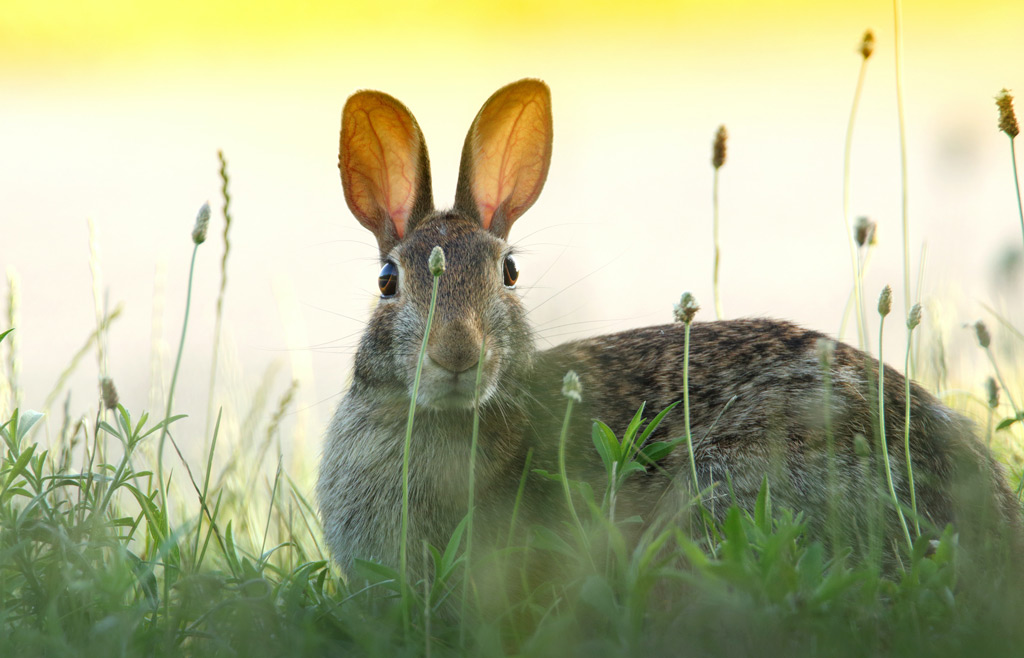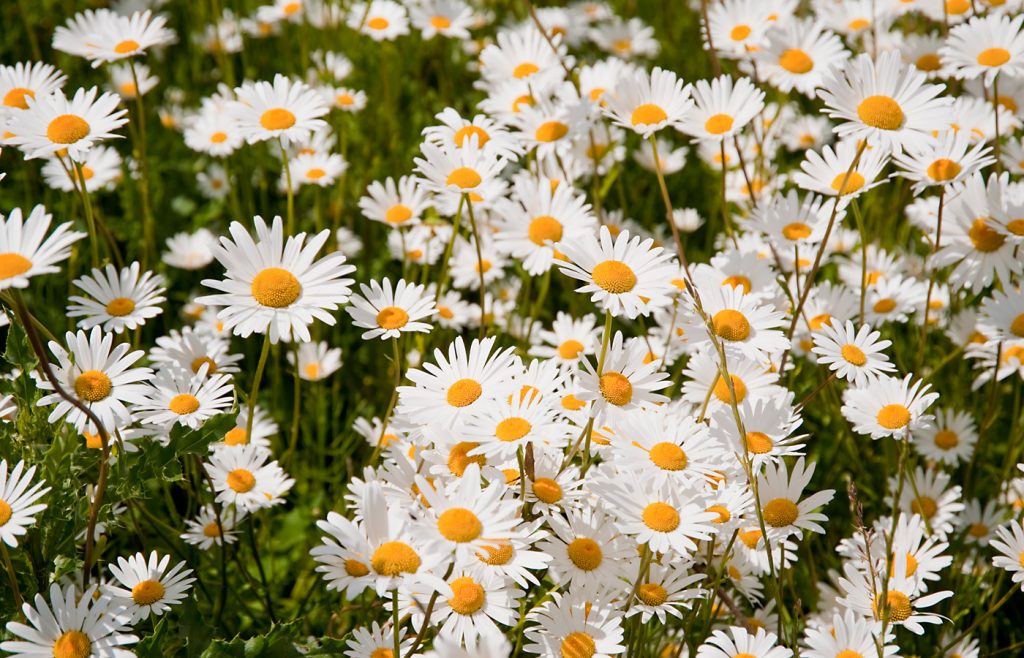
If you know me at all, you know I’m a sucker when it comes to animals, especially small furry ones. In the fall, my mother gets angry with me when I swerve the car to avoid running over fuzzy wuzzy caterpillars on the highway. “Why would you risk my life for a caterpillar!?” I can totally see her point, but it’s almost involuntary. There are very few of God’s creatures that I feel comfortable extinguishing: basically just ticks, mosquitos, bagworms, brown marmorated stink bugs—you know, invasive species and disease-spreading pests. I can justify those.
But in the past few years, I’ve developed an almost murderous disdain for a certain cute-as-a-button, spawned-from-Satan critter. This loathsome and vicious beast has caused me sleepless nights and fits of rage, not to mention dollar after hard-earned dollar. He is the vilest of the lagomorphs, the most loathsome of the low-bellied lapins. It’s not popular to hold this kind of grudge during the month of Easter—sorry, kids—but Mr. Peter Cottontail . . . you can go shove it.
I never had an issue with rabbits until I started getting serious about gardening. My fever for growing pretty things began with a patio-potted hibiscus and some colorful coleus one summer and blossomed from there. I got hooked. I started helping friends and family members with their gardens, and before I knew it I was designing flowerbeds for a handful of clients around town.
A few years back I got a job reestablishing perennial flowers around a large domicile on Fairfield’s north side. The owner of the home remarked that previous gardeners had planted several things, but much of it had petered out. That’s weird, I thought—perennials are meant to come back year after year. Maybe they suffered a couple hard winters or weren’t suited to the soil type or light conditions? And there is a semi-deplorable trend for flower sellers to label certain plants as perennials when in all likelihood, in Iowa, they will behave like annuals (dead as a doornail come winter). I’ve had many a success with plants bought from all kinds of greenhouses, but buyer beware. Do your research first if you’re looking for a perennial that acts like a perennial.
Anyway, I was up for the challenge of this new job, excited to bring some color back to the property, but it wasn’t until after I started putting a few things in the ground that I realized what part of the issue might have been. The place was a haven for rabbits. Hungry ones.
Day after demoralizing day I would walk onto the property and see new damage that those blasted cottontails had done to my fresh plantings. That first summer in particular, anyone within earshot would have heard me weaving a tapestry of obscenities as I walked from bed to bed. “Hellfire and damnation!! Those scumbags! Those a-holes!” I have a potty mouth when I see a perfectly good bloom just lying there decapitated on the ground with that telltale diagonal bite mark on its stem. Sufferin’ succotash!
There are certain flowers that those blasted bunnies will just eat like salad—blooms, leaves, stem, everything. Thinking about putting petunias in your yard? Nasturtiums? Tulips? Think again.
With the uncanny number of wabbits around this particular neighborhood—procreating regularly every four to six weeks—the sight of a baby bunny was no longer cute. In fact, babies are the worst culprits. Younger rabbits haven’t learned yet which plants they don’t like, so they’ll bite into anything that seems remotely like food, just to have a taste. Once they’ve taken a chomp, they might not even want a second mouthful—but I’ve seen them happily leveling off a stand of lilies while they experiment with their palates. Jerks.
The most heartbreaking moment of that first year was when I bought some lavender plants in full bloom and, as an experiment, left them unplanted in the lawn for a good week to observe any possible nibbling. Every time I checked, they looked fine. No snacking. Dare I?
I finally decided it was safe to put them in the ground. The next morning—you guessed it—I came back to check on them and they’d been mowed down by some rabid little rabbit mouths! Those little wieners!! It’s like they were just messing with me!!!
This past season, however, I got a sweet little taste of justice. I’d heard reports of a stray black cat skulking around the neighborhood, and I began discovering intermittent evidence of its hunts. I did not mind finding rabbit carcasses behind various hedges. I secretly celebrated. I’m just glad I got there after the nefarious deed was done.
I have struggled my way through a few seasons now, and have read about and tried various rabbit-rebuffing methods, including:
Exclusion
Rabbits are attracted to tender, new growth, so I surrounded a few individual perennials with chicken wire until mid-summer last year to give them a fighting chance. It was mostly effective, but somewhat destroyed the concept of beauty I was going for. Dang.
Repellants
I found an organic, non-toxic Rabbit-Stopper spray that smells of mint—a far cry less offensive than putrescent-egg-solid sprays like Liquid Fence. (Liquid Fence works for some people—and it might work for you too, as long as you don’t mind applying it every few days and wearing a gas mask when you step into your yard.) My Rabbit-Stopper spray deterred rabbits from snacking on certain plants for a time, but the oil in the spray bleached and spotted the foliage and blooms, even when applied as a fine mist. Why is nothing easy?
The list of things people use—with various degrees of success—gets weirder and weirder: dog hair, human hair, soap chips (Irish Spring, the smelliest one, is recommended), dried blood, fox urine, cayenne. If you start reading online garden forums and product reviews, you’ll find folks who swear by these methods, as well as people who have had zero luck with them. At the very least, its good entertainment. One woman’s comment made me chuckle: “My bunnies think most repellants are condiments.”
Rabbits are adaptable little boogers. If it’s a food that they really, really want, they’ll either develop a taste for the odorous traps you’ve put in place or just become desensitized to them. I admit, in a moment of desperation I peed in a bucket behind the garage and dumped it on a few half-eaten hostas after hearing that urine smells might deter the little stinkers. I’ve since learned that urine can be beneficial to a garden, but you’re supposed to dilute it with water 20:1, and you’re not supposed to pour it right onto the plant. I think those hostas are still pissed at me.
Plant Selection
This season I plan to use a combo of the above methods to reduce damage from baby rabbit nibbling, but I’ve decided the best plan is to hedge my bets on perennials that adult rabbits just don’t crave. I’ve compiled a short list of my favorite plants that have stood the bunny test over the course of several years. If your neighborhood also happens to be overrun with hares, maybe you’ll find them to be useful.
Other Eating Options
I also observed, unfortunately, that when the surrounding lawns were allowed to grow a little and were more abundant with clover flowers, there was much less snacking in my flowerbeds. After the lawn was mowed, I often held my breath to see what new nibbling would occur in the garden. A case can be made for leaving areas in your bunny-infested yard where flowering ground-cover-type weeds are allowed to grow. Just sayin’.
For my money, and that of my clients, I’m paying most attention to cultivars that rabbits are rarely attracted to, favoring those whose blooms are higher off the ground. I’ve absolutely put the kibosh on starting anything from seed—baby greens are basically a bunny buffet.
This coming summer, I hope that black cat sticks around—and that she stays nice and fat.

Tried & True Bunny-Proof* Plants
BULBS:
Daffodil
Daylily
Hyacinth
Iris
PERENNIALS:
Aster
Azalea
Chrysanthemum
Catmint
Coral Bells
Clematis
Columbine
Coneflower (Echinacea)
Daisy (Shasta)
Dead Nettle
Geranium/Cranesbill
Hibiscus
Hydrangea
Impatiens
Oriental Poppy
Peony
Russian Sage
Sage
Salvia (Meadow Sage)
Sedum
Vinca minor (vining ground cover)
Zagreb Tickseed
ANNUALS/ANNUAL HERBS:
Alyssum
Ageratum
Basil
Begonia
Chives
Cilantro
Coleus
Geranium
Lantana
Lemon Balm
New Guinea Impatiens
Oregano (sometimes acts like a perennial)
Osteospermum
Marigold
Mexican Heather
Mint
Snapdragons
Thyme
Vinca (Catharanthus)
Zinnia
*On rare occasions I’ve seen nibbling on these varieties, but it’s by no means chronic.
